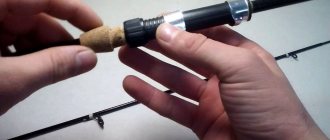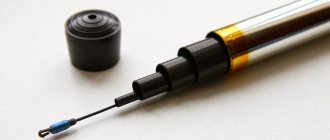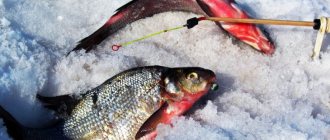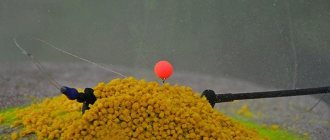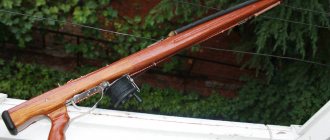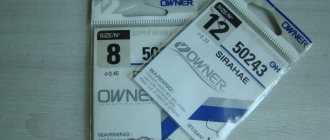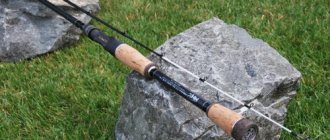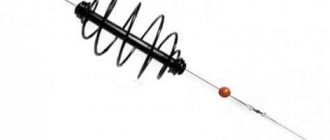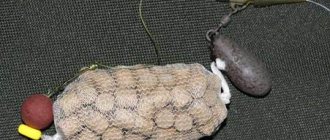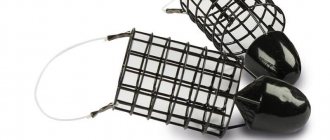What can you do for feeder fishing?
Long gone are the days when anglers made most of their gear themselves. Feeder is an exception. There is enough gear available for fishing this way. You can just come to the store and buy everything you need - from a rod and reel to a seat and a box of feeders. And all this will work without additional modifications. However, much of what is sold is expensive. And much of what you do yourself is better than purchased. Here is a short list of what can be made at home:
- Feeder rod - from scratch or converted from another
- Feeders
- Seats, platforms
- Sieves for bait
- Rod stands
- Advanced Fishing Reels
- cages
- Additional alarms
- Extractors
And many thousands of little things that a fisherman can make on his own and does not need to be bought in a store. In addition to completely homemade things, there are a lot of useful purchases that can be made more profitably in other stores than in special fishing stores. And they are perfect for feeder fishing, performing just as well as specialized ones.
Homemade equipment and equipment installations when fishing with a feeder
Feeder - three simple ways to improve your skill level
The majority of domestic “amateur fishermen”, using feeder gear, do not strive to develop and develop their skills. They get stuck at the stage when the first results appear.
For such “achievements”, it is enough to fill the feeder with porridge, attach any bait to the hook and throw the equipment into the water. The fish will bite sooner or later. But is that so?
The article provides recommendations for choosing reels for feeder fishing. The main characteristics of the reels used in feeder fishing and the requirements for them are considered.
The article is divided into subheadings, is informative and can be useful both for novice fishermen and for those who have been fishing with classic donks for many years and are switching to using this gear. . .
The article discusses the advisability of equipping a feeder rod with a reel with a baitrunner system.
What is being considered is not so much classic feeder fishing as bottom fishing, adapted by domestic fishermen, using a feeder rod.
Anti-twist in feeder fishing - all the pros and cons
This author's material discusses the positive and negative aspects of using an anti-twist tube in feeder fishing. In general, this installation is shown to be ineffective. The only exception is fishing in special conditions, which are indicated in the text.
The main purpose of the anti-twist tube is expressed in its name - to prevent overlapping of the leash. How effectively it copes with this, and the advisability of its use, we will consider below.
How to simplify the already simple and uncomplicated feeder equipment as “In-line”? Why the author did this, and how exactly, you can find out in this author’s material.
The equipment is adapted for fishing on the Volga when the coastal strip is covered with algae. Nevertheless, this simplification of installation may be applicable for fishing in other bodies of water, under completely different fishing conditions.
The existence and successful use of a variety of different installations and equipment connected from monofilament or braided cord does not exclude the existence and use of equipment using a plastic anti-twist.
The use of such a scheme is caused by the need to avoid fraying and breaks of fishing lines and cords when fishing in the conditions of the bottom of a reservoir, which can cut fishing line and equipment with a feeder and nozzle.
Installation of equipment and fishing on a feeder with a method feeder
In this article, the author examined the intricacies and features of installing feeder equipment using a method feeder. Recommendations are given for fishing with feeder gear using this equipment and appropriate bait.
When mastering feeder fishing, a novice angler is faced with a lot of questions. A large selection of fishing rods with different characteristics, all kinds of baits and flavors, various shapes, weights and purposes of the feeder.…
Yes, how many things can be listed. At the same time, this versatility allows you to adapt the feeder to almost any fishing conditions and makes this fishing method unusually catchy.
Feeder method. This combination sounds, to put it mildly, unusual for many domestic fishermen, but in the West, the carp style in the feeder no longer surprises anyone.
You can always catch fish with an English bottom, but in order to consistently catch a certain “standard size” you need to experiment, adopt nuances from competitors. If you want to catch large specimens, you will have to look to the carp fishermen. First of all, we are interested in the snap method.
Feeder rig “Helicopter and two knots” for fishing in the current
This simple and relatively new equipment for feeder fishing is gaining more and more popularity. However, it can only be used effectively under certain conditions for which it is intended.
And it can be used effectively when fishing in the current. In still water, greater effect can be achieved using a Gardner loop.
This article presents and describes the most popular and common feeder installations of equipment: inline, paternoster, symmetrical loop, asymmetrical loop, sliding equipment, helicopter. The use of these equipment when fishing with feeder gear will not only allow you to have fun, but also significantly increase your catches. . .
For the manufacture of feeder equipment, it is necessary to use only monofilament fishing line, that is, ordinary fishing line. The diameter of this line should be no more than 0.30 mm and no less than 0.20 mm. depending on the severity of the feeder and the depth of the reservoir.
The use of this particular type of fishing line allows the leashes not to twist when oscillating, while the sensitivity of the loops remains absolutely high. It is also very important that the fishing line is stiff enough to ensure high strength of the fastenings. . .
The “Paternoster” or Gardner rig is the simplest feeder rig. It is knitted onto the main line and consists of two loops. In most cases, braid is used as the main fishing line.
The main advantages of the equipment include ease of use and very good sensitivity. This is especially important if fishing is on a reservoir with a peaty or silty bottom. The tackle will not lose its sensitivity, even if the feeder is immersed deep in the silt, or if it falls into a crevice between the stones. This is the design of the “paternoster”.
Homemade feeder tips
Any angler who is familiar with a feeder knows that rod tips are a consumable item. At least two or three break during the season, and you have to constantly buy them in the store. But you can make the ends for the feeder yourself, using cheaper components, and save up to 50% of money! Fiberglass tips are made.
It is better to do this in a large batch, about 20-30 pieces. To do this, you need to buy a semi-finished product in the store - fiberglass whips. The price of such a whip is from 1 to 2 dollars. The whip is clamped from the butt part into a drill, which is installed motionless in a vice. Then sandpaper is applied to it and it is ground down to the desired thickness. When working, it is advisable to water the whip and use leather gloves, since fiberglass can dig into your hands and clog the air. This way you can get tips of any sensitivity.
After processing, the butt is ground down to the desired thickness that is suitable for your feeder. Rings from old broken quivertypes, store-bought or homemade, are installed on the tip. It is desirable that the rings be as light as possible and they need to be placed quite often. If you use a braided cord, it is better to buy rings with ceramic inserts.
At the end it is painted with bright colored nitro paint. The tips can be marked by placing it in the rod and seeing under what load it bends 90 degrees - this is the quivertip test. As a result, you can save up to $2 on each homemade feeder alarm if you buy all semi-finished products in bulk or use spare parts from broken gear. In the same way, you can make feeder nods, which are more used in bottom fishing.
Tips for selecting components
When purchasing a feeder, there are two things to consider:
- Buy them with a weight no greater than that indicated on the rod test.
- Have two in stock, as sometimes the feeders get snagged and break off.
- Do not spend money on purchasing ready-made feeder gear, but purchase only individual elements.
- To cast the feeder several times in one direction, you need to select a landmark on the opposite bank and aim at it.
- To prevent the feeder from clinging to the bottom of the reservoir when playing, you need to make a small wing measuring 7 cm by 2, which is cut out of a plastic bottle. Four holes are made along the longitudinal axis at equal distances. A fishing line is threaded through them, and the wing is placed at a distance of 20–30 cm from the feeder.
- If there is a rare bite, cast after 15 minutes.
- Do not make sudden jerks when casting the tackle. This may lead to the rod breaking.
Stands
Many anglers look at feeders and are amazed at how many different supports are used when fishing. This is a pair of stands opposite the angler, so that you can fish several different points with different casting sectors, a second pair under the butt of the rod, another stand on the side to put the rod on it while fishing, when you take off the fish, fill the feeder and change the nozzle, and another pair stands on which ready-made spare fishing rods lie.
Of course, you can get by with three - two for installing an abandoned feeder and one on the side, on which the rod is placed to remove the fish. Many people consider this unnecessary, since they can cut flyers from bushes growing along the banks of a reservoir as weeds. But anyone who has used stands knows that they are much more convenient, and no time is wasted preparing the fishing area.
All these stands have different configurations, and their price in the store is quite high. But you can use cheap flyer stands, which cost a little over a dollar, and then make wide feeder stands out of them, allowing you to move the rod in a large sector.
To make it, take a cheap flyer stand, usually used in float fishing. You can take both short and telescopic ones. It is most convenient to use supports that are screwed into the ground, as they do not warp if you place the rod close to the edge. The flyer from the top is twisted and sawed off. We only need the threaded part that fits into the rack. It comes out carefully.
After this, take a 16-gauge polypropylene pipe and insulation for it of a suitable diameter. The pipe is bent so that the side stops of the stand of the desired shape are obtained - an angle, a ring or a hook. You can bend it by heating the pipe over gas and holding it in welding gloves so as not to burn your hands. Then a hole is drilled in it in the middle, slightly smaller than the diameter of the threaded insert. The insert into the pipe can be placed in different ways - placed on glue, secured with a screw, or, after heating, pressed into polypropylene. The author uses pasted ones.
Then pipe insulation is put on the pipe, and a hole is cut for the insert. A rod placed on such a stand is not injured and clearly maintains its position due to the roughness of the polypropylene coat. The stand is resistant to water, ultraviolet radiation and mechanical damage.
If desired, you can make other stands according to the same principle, using purchased ones or made from other materials - old canes, ski poles, tubes, etc. The main thing is that they are collapsible, light enough, and that the rod does not have direct contact with metal, but lay on a soft lining. Contact with metal and stones when fishing will certainly kill the rod, especially the ringing coal. Cracks will certainly form in it, and the likelihood of failure will increase. For example, if a bent stand is made from wire, it must be hidden in a hose from a dropper before use, so as not to injure the rod while fishing.
How to choose the right rod for feeder tackle
Before you go to the store to buy a fishing rod, you need to understand the meaning of some special terms, such as:
- test;
- build.
Rods are also selected according to the following parameters:
- By lenght.
- In terms of hardness.
- By elasticity.
The test is often marked on the rod. It consists of two numbers, the first means the minimum weight of the feeder that can be cast with this rod, the second means the maximum weight. Of course, you can cast a lighter weight than that indicated in the test, but the throw will be ineffective due to the insufficient elasticity of the rod; you can throw a feeder with a heavier weight than intended, but there is no guarantee that after the first throw the upper part of the blank will not break, in a word , the use of excessive weight of the feeder reduces the service life of the tool.
Let's look at the rod's action.
It is generally believed that rods have the following types of action:
- fast;
- average;
- slow.
Each of these systems has an even finer gradation, but today we will not consider them. With a fast action, at the moment the load appears, the rod will bend in the upper third of the blank; with a medium action, the bend will occur in the upper half of the tool; with a slow action, the entire rod will bend.
In the store you can find rods for feeder fishing from 2.7 meters in length to more than four meters in length. When fishing in reservoirs where it is not possible to make long casts, short rods are used; the longest blanks are used for casting a feeder over a long distance and when fishing in strong currents.
The more elastic the rod, the faster it returns to its original state after removing the load. In other words, elastic rods are fast action rods, while rigid rods are slow action rods.
Use feeders of a weight that matches the test of the rod. You should not use a long rod on a small body of water - it will be difficult to cast short distances.
Feeder feeders
Many people know that for feeder fishing you can make feeders yourself from lead and a plastic bottle. These are the so-called “chebaryukovkas”, named after the name of the inventor, which are an oblong lead weight with an eyelet for fastening and a plastic cylinder with holes attached to the top of the weight into which food is poured. The cylinder is hollow on both edges, delivers feed even to great depths and currents without scattering and delivers it satisfactorily. This homemade feeder feeder is best suited for catching bream in the current.
However, not everyone knows that the process of making a chebaryuk feeder can be simplified. For this, thickened plastic from a bottle is used. The bottle is heated over a fire, causing it to shrink slightly in size. The plastic of the bottle becomes much thicker. Feeders are made from this kind of plastic.
Plastic with holes made in it is immediately installed into the mold for casting sinkers, into which lead is poured during casting. Lead is not capable of melting thick plastic, and even if it does, it does not affect the functionality of the feeder. As a result, we get rid of the operation of attaching the sinker, and the attachment itself is more reliable.
The most important question is where to get lead. All the old lead-braided cables have long been dug up and handed over to homeless people, and it’s expensive to buy weights for tire fitting, which are recommended by most authors of videos on YouTube. A simple option is to purchase the largest “hare” shot by weight at a hunting store. It is the cheapest source of lead available to any angler and is sold without a gun permit.
Using this method, you can make many feeder feeders with your own hands and not be afraid to unhook them. It is very technologically advanced and does not involve any precise operations or special tools such as a riveter. The only expensive component that can be recommended is an aluminum casting mold, which can be made to order at the factory. But if you make a lot of feeders, then this expense is justified, and if the angler himself is a miller, it’s not so difficult to do it during a lunch break. Feeder mounts and anti-twist mounts can also be made by the fishermen themselves and are the same consumables as feeders.
Bite alarm
When fishing on a feeder, bite indicators are replaceable tips. In practice, this is their main purpose. If the angler is absent during the bite, then most likely he will not catch the fish, since he needs to hook in time.
Many fishermen use electronic signaling devices, which is much more convenient and does not necessarily “stick around” near the rod. This is especially true when fishing in the dark, when the tip of the rod is simply not noticeable.
Seats and platforms
Feeder fishing is associated with a fishing platform. This is a special seat for a fisherman, on which the necessary rod stands and accessories are attached. The platform is comfortable, has a backrest, a footrest and adjustable legs, with which you can install it even on a steep, uneven bank. For those who drive a car, the platform is very convenient.
Unfortunately, sitboxes and platforms are very expensive. A fairly high-quality and lightweight platform costs at least a thousand dollars. And good options with accessories are even more expensive. You can make a good platform yourself, using drawings and ready-made components, purchased in medical equipment stores, parts for shelving and other parts. As a result, the platform will cost you two to three times cheaper, plus a little time spent and a couple of tools for work.
A great option is to use a winter box instead of a sitbox. It's convenient, easy to carry to your fishing spot, and most anglers already have one. To install it on a slope, two methods are used - attach a pair of legs to it on one side or install it by digging the bank under it. Both options take the same time, unless, of course, you have to place it on a concrete slope where digging will not work. A metal garden scoop purchased at a garden supply store will help you cope with the task; it will easily fit in the same box along with your fishing accessories.
Another seat option is a regular bucket. By the way, it’s better to buy it not in a fishing store, but in a construction store - it will cost three times less. It's comfortable to sit on the bucket. You can take a couple of buckets nested one inside the other. In one the bait is prepared, on the other they sit and put the fish in it. In order to sit comfortably, the lid is made of plywood and upholstered with soft material. Fish can be placed in a bucket without other fishermen noticing. It is also convenient to store and transport live bait in a bucket if they are caught with a feeder for live bait fishing. Unfortunately, if there is a lot of fish, you will have to make a cage for it, because it will not fit into the bucket.
Other accessories
You can make a lot of other things for fishing - bait sieves, homemade leashes, anti-twisters, flat feeders for the feeder, etc. Also, many fishermen make homemade baits for the feeder, and they work no worse than mass-produced ones. On sale you can find self-cutters for feeders, the drawings of which are offered by a number of craftsmen, for money and for free. The author does not really understand the meaning of such fishing with a self-hook, but those who like it can try it. The main thing in this matter is hands and desire.
After all, the feeder originally began as fishing for the poor, when a feeder was made from curlers, a homemade stand was sharpened from a chair leg, and a fishing rod was used repurposed from a broken spinning rod. And he has great potential for improving his own gear, even those purchased in the store.
Save on purchases
There are a number of items that are used for fishing, and which are purchased in stores not for fishing, but in hardware stores.
- Buckets. It has already been said about their ability to be used as a seat. At the fishing store, the bucket says “sensas” on the bucket and costs five dollars. You can buy it at the hardware store for one or two dollars. If you wish, for two and a half, a milk bucket for food products. There is almost no difference in manufacturing quality. And if so, why pay more?
- Fishing suitcases. They are sold in fishing stores in the form of a box with a handle, which has a couple of compartments inside and small compartments on top where you can put hooks, clasps and feeders. This again can be bought at a hardware store at a price three times lower. By the way, it is very comfortable to sit on it if the shore is flat and the suitcase is large enough.
- Sectional boxes. These are boxes with a lid with a latch, with several compartments. Usually they store hooks, feeders, and other small accessories. In a fishing store, this will cost from three dollars and more. In a sewing store, these same boxes are sold for sewing supplies and cost two to three times less. You can give a lot more examples when you can simply buy the same thing cheaper and use it for fishing. However, the list is far from accurate, because sellers can change prices for their goods. The main thing that can be advised to fishermen is to look and you will find. You need to have a creative view of things and imagination, and you can always find a replacement for something that turns out to be unaffordable.
You can ask your question to our author:
Review of the best TV feeder manufacturers
The following manufacturers have gained popularity:
Mikado
This Polish company has long been famous for the reliability of its products and reasonable prices for quality. Separately, it develops the line of feeder rods, and the products are tested by sports fishermen.
Among the telescopic models, the following stand out:
SILVER EAGLE TelePicker and FISH HUNTER TelePicker priced from 900 to 1 thousand rubles.
Kaida products
The company has been operating for more than 10 years and produces goods at an economy class price, but of good quality and a large selection, including many telescopic models with and without rings. All Kaida folding feeders undergo multi-stage inspection. The blank of the spirado rod is made of high-quality carbon, which makes it lightweight.
Salmo diamond tele feeder
Here you can find both budget fishing rods and expensive ones. For example, DIAMOND TELE FEEDER at an affordable price of 1600 rubles.
Volzhanka
This specialized fishing store has a “Telefeeder” series, represented by models priced at about 4 thousand rubles, with a length of 3.3 to 3.9 m and a dough weight of up to 150 grams. Volgar brand blanks are made of fiberglass, which makes them durable and suitable for catching even predatory fish.
Daiwa
The famous Japanese company has been in business since 1945 and is known for its excellent quality. From telescopic models, an example is TRIFORCE TELE FEEDER TF LG R 36T-AI. Costs approximately 2 thousand rubles.
